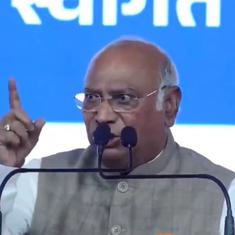The Goods and Services Tax continues its way forward, with the passage of all four GST-related Bills in the Lok Sabha. The bills will now move to the Rajya Sabha for discussion this week.
GST is a powerful reform. As the Economic Survey 2017 puts it, “The GST will create a common Indian market, improve tax compliance and governance, and boost investment and growth; it is also a bold new experiment in the governance of India’s cooperative federalism.”
GST will replace some of the biggest indirect taxes such as excise duty and service tax at the central level. At the state level, some of the biggest indirect taxes which will get replaced by the GST include sales tax, octroi, and entry tax. These were in existence since the power to levy indirect taxes is divided between the Centre and the state.
While bringing the bills to the Lok Sabha has been a long journey, the real hard work of setting up the framework and formulating the rates of GST lies ahead. This will also be a tough journey and one with limited time considering that the government wants to implement GST across India from July 1.
Countdown begins
The four Bills that were passed by the Lok Sabha were:
1. The Central Goods and Services Tax (CGST) Bill, 2017: five rates, namely 0%, 5%, 12%, 18% and 28%
2. The Integrated Goods and Services Tax Bill, 2017: for the levy of tax for interstate trade (subject to a maximum of 40%)
3. The Union Territory Goods and Services Tax Bill, 2017
4. The Goods and Services Tax (Compensation to States) Bill: for the compensation to be paid to states for loss of revenue due to implementation of GST.
Once the GST Bills are passed in Parliament, each state and Union territory will pass its own state-level GST bill. Af and once this is done, the unified GST regime will – hopefully – be implemented on 1st July 2017.
The real work starts
The Economic Survey’s chapter on GST speaks of “One India, One Market, One Tax”. While the GST is one tax, multiple tax slabs (namely 0%, 5%, 12%, 18% and 28%) are already laying the grounds for complications. The real work of assigning goods and services under these tax slabs will begin now and this will not be without its own set of issues. As Congress Leader Veerappa Moily asked in the Lok Sabha, “One nation, one tax has remained a myth. It is not clear how the categorisation of the 90:10 divide for companies with turnover below Rs. 1.5 crore will be done. Categorisation of goods also needs to be done. For example, is KitKat a chocolate or a biscuit? Is coconut oil considered as hair oil or cooking oil?”
Another example of a contentious issue is the proposed anti-profiteering clause. Under this clause, the government will monitor prices of goods before and after GST implementation to ensure that in case a business benefits from lower costs after GST, the benefits of these lower costs are passed on to the consumer in the form of lower prices.
Take for example, when the Union Budget cuts excise duties on cars. Car companies then have to cut prices on their car models so that consumers benefit from the excise duty cuts. However, the Government neither monitors nor enforces these price cuts. In the GST scenario, this monitoring could lead to friction between companies and the Government.
As Pratik Jain, partner at PwC, explained: “No mention is made as to who will undertake this task, how it will be undertaken, when it will commence, when it will end, and why it is necessary to add an additional compliance burden on Indian businesses already struggling to keep pace with the preparation for the introduction of a GST, even if it is delayed by three months or so to July 2017.”
Addressing this issue, Revenue Secretary Hasmukh Adia recently clarified that only credible complaints would trigger the anti-profiteering clause.
GST Council should heed CEA’s advice
The above instances are only two examples of contentious areas for the GST. In a recent op-ed article, Chief Economic Advisor, Arvind Subramanian, discussed six specific areas for improvement before the implementation of GST:
1. Tax structure: eliminate the highest slab of 28% and create a combined rate of 20%.
2. Goods and services: Taxing the majority of goods and services at a similar rate in the interests of simplicity.
3. Textiles and clothings: all textiles and clothings to be taxed at standard rate of 18% to avoid confusion and favoritism
4. Gold: Treat gold like any other luxury item of consumption; GST on gold should be at least 12%
5. Tobacco products: Address the difference in taxation of cigarettes and bidis by treating both similarly under GST
6. Exemptions under countervailing duty and special additional duty: Restrict exemptions under the Integrated GST on imports.
Finally, as Subramanian says in the Economic Survey, “The transition to the GST is so complicated from an administrative and technology perspective that revenue collection will take some time to reach full potential.“ Thus, his recommendations should be taken seriously by the GST Council.
The GST is bound to create a profound change in the way business is done across India. It is much wider in scope and ambition than service tax which was implemented in the 1990s. Thus, getting the GST right in principle and implementation becomes critical to limit and manage the oncoming disruption to businesses.










